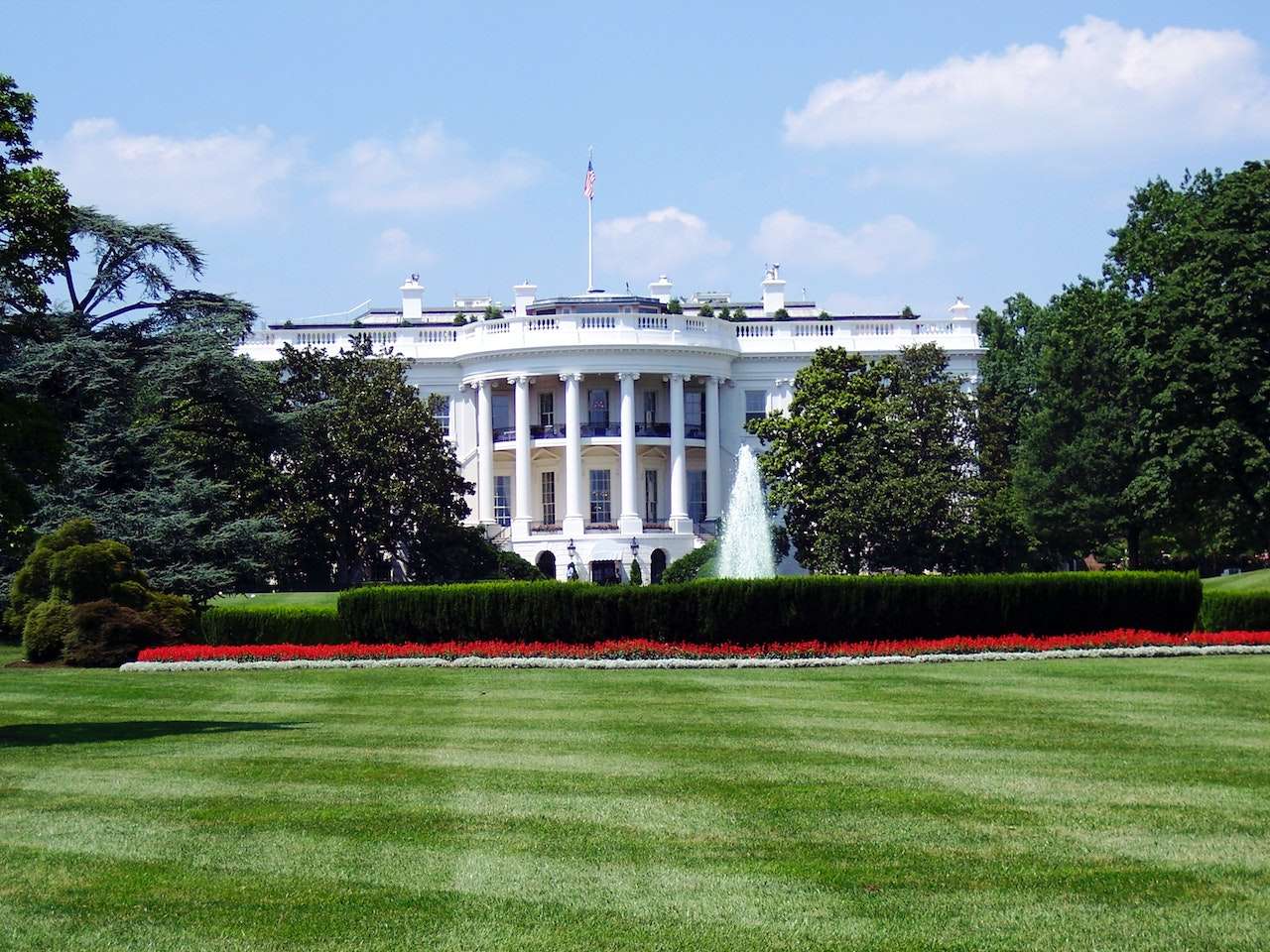Explaining political ideologies like Democrat and Republican to a child can be challenging, but here’s a simplified way to introduce the basic concepts:
Democrats and Republicans are two major political parties in the United States. They have different ideas about how the country should be run and what is best for its people. Think of them as two teams with different game plans.
Democrats believe in things like equality, helping others, and making sure everyone has access to things like healthcare and education. They often focus on protecting the environment and creating programs to assist those who may need extra support.
Republicans, on the other hand, believe in things like individual freedom, personal responsibility, and free market principles. They often emphasize limited government involvement and lower taxes, believing that this helps create economic opportunities for everyone.
It’s important to remember that these are general ideas, and not all Democrats or Republicans will agree on every single issue. People from both parties can have different opinions on various topics, and that’s okay.
In a democracy, people can choose which party they want to support based on what they think is best for the country. During elections, candidates from each party run for different positions, such as president or senator. People vote for the candidate who they believe will do the best job based on their ideas and values.
It’s important to listen to different perspectives, respect others’ opinions, and understand that people can have different ideas about what is best for our country. Democracy allows us to have these discussions and make choices together.
Remember, as you grow older, you can learn more about politics and develop your own opinions based on your values and what you believe is right.

An Example Of How How You Might Explain Democrat and Republican To A Child
Have you ever heard the words “Democrat” and “Republican” and wondered what they mean? In this blog, we’re going to learn all about these two important political parties in America. Get ready to dive into the exciting world of Democrats and Republicans!
What are Political Parties? Before we start, let’s understand what political parties are. A political party is a group of people who share similar ideas and beliefs about how a country should be run. They work together to make decisions and try to get their candidates elected in elections.
Democrats: The Party for Change The Democratic Party is one of the two main political parties in America. Democrats believe in making changes to help people and create a fairer society. They care about things like healthcare, education, and protecting the environment.
Here are some key ideas that Democrats support:
- Equality: Democrats believe that everyone should be treated equally, no matter where they come from or what they look like.
- Helping Others: Democrats think it’s important to help those who might need extra support. They believe in providing healthcare for everyone and helping those who are less fortunate.
- Protecting the Environment: Democrats want to take care of our planet. They believe in using clean energy sources, like wind and solar power, to help protect the Earth.
Republicans: The Party of Individual Freedom The Republican Party is the other main political party in America. Republicans believe in individual freedom and limited government involvement. They focus on things like lower taxes, strong defense, and supporting businesses and industries.
Here are some key ideas that Republicans support:
- Lower Taxes: Republicans think that lower taxes can help people keep more of the money they earn. They believe this can help businesses grow and create more jobs.
- Strong Defense: Republicans believe in having a strong military to protect the country and its citizens.
- Individual Freedom: Republicans value the freedom of individuals to make choices about their lives and believe that the government should have limited interference in people’s lives.
Elections and Parties: During elections, candidates from the Democratic Party and the Republican Party run for various positions, such as the President or members of Congress. They share their ideas and plans with the people, hoping to get their support and votes.
It’s Okay to Have Different Opinions: Remember, it’s okay to have different opinions and beliefs! People might have different ideas about how to solve problems or make things better. That’s why we have different political parties, so everyone’s voice can be heard.
Conclusion: Congratulations! You’ve learned about the Democratic and Republican Parties in America. Democrats want to make changes to help people and protect the environment, while Republicans focus on individual freedom and limited government involvement. As you grow older, it’s important to stay informed, ask questions, and form your own opinions.
Remember, the future belongs to you, and one day, you might even become a part of these parties or start a new one with your own ideas. Keep exploring, learning, and always remember to be respectful of others’ opinions. You’re on your way to becoming an informed citizen and a future leader!
Explaining The Two Party System In America For A Child
The following is an example of how you might explain the two party system to a child.
Hello, young readers! Have you ever wondered why there are only two main political parties in America? It’s an interesting question, and today we’re going to explore the fascinating world of the two-party system in the United States. So, buckle up and get ready to dive into the world of politics!
What is a Political Party? Before we jump into the two-party system, let’s start by understanding what a political party is. A political party is a group of people who share similar ideas and goals about how a country should be governed. These parties work to convince people to vote for their candidates in elections.
The Two-Party System: In America, there are two main political parties: the Democratic Party and the Republican Party. The two-party system means that these two parties are the most powerful and influential in the country. Most elected officials, like the President, members of Congress, and state governors, belong to one of these two parties.
The Democrats and the Republicans: Let’s learn a little bit about each of these parties and what they stand for.
- Democratic Party: The Democratic Party usually believes in more government involvement to help people. They focus on issues like providing healthcare for everyone, protecting the environment, and creating equal opportunities for all. Their symbol is the donkey.
- Republican Party: The Republican Party usually believes in less government involvement and more individual freedom. They focus on issues like lower taxes, strong defense, and supporting businesses and industries. Their symbol is the elephant.
Elections and Political Parties: During elections, candidates from different political parties run for office. They try to convince people to vote for them by talking about their ideas and plans for the country. In America, we have different types of elections, like the presidential election and congressional elections. Candidates from the Democratic Party and the Republican Party compete against each other in these elections.
Why Only Two Parties? You might be wondering why there are only two main parties and not more. Well, it’s because over time, the Democratic Party and the Republican Party have become very strong and have gained a lot of support from people across the country. Other parties exist too, like the Green Party or the Libertarian Party, but they are not as big or as powerful as the two main parties.
Is the Two-Party System Good? Some people like the two-party system because it provides clear choices and stability. Others think that having only two choices limits the diversity of ideas and voices in politics. It’s an ongoing debate, and people have different opinions about it.
Conclusion: Congratulations! You now have a better understanding of the two-party system in America. The Democratic Party and the Republican Party play important roles in our country’s politics. Remember, as you grow older, it’s essential to stay informed, learn about different perspectives, and make your own decisions about the future of your country. Who knows, maybe someday you’ll be part of a new party or help shape the political landscape in a different way. The choice is yours!
Keep asking questions and exploring the world around you. Happy learning, young future leaders!

A brief history of the Republican Party
The Republican Party, also known as the Grand Old Party (GOP), has played a significant role in shaping American politics since its inception. From its roots in the mid-19th century to its position as one of the two major political parties in the United States, the Republican Party has a rich and fascinating history.
We will take a journey through time to explore the origins, key moments, and notable figures that have shaped the Republican Party into what it is today.
Origins and Early Years Of The Republican Party
The Republican Party emerged in the 1850s, fueled by a convergence of different groups and ideologies. It was born out of opposition to the expansion of slavery into new territories, with the belief that it threatened the economic and moral fabric of the nation.
The party’s first presidential nominee was John C. Fremont in 1856, although he did not win the election.
Civil War and Reconstruction
But how did the Republican Party fare during the tumultuous period of the Civil War? The election of Abraham Lincoln as the 16th President of the United States in 1860 marked a turning point for the Republican Party.
With the outbreak of the Civil War in 1861, the party’s primary focus shifted to preserving the Union and abolishing slavery. The Emancipation Proclamation issued by Lincoln in 1863 further solidified the Republican Party’s commitment to ending slavery.
Following the Civil War, the Republican Party played a crucial role in the era of Reconstruction, advocating for the rights of newly freed African Americans and promoting policies that aimed to rebuild the South.
The passage of the 13th, 14th, and 15th Amendments to the U.S. Constitution during this period represented significant milestones in the party’s history.
Progressive Era and Conservation
Fast forward to the early 20th century, and the Republican Party experienced a shift towards progressive policies.
What prompted this change?
President Theodore Roosevelt, a prominent Republican figure, championed progressive reforms aimed at regulating big businesses, protecting workers, and conserving natural resources.
Roosevelt’s conservation efforts led to the establishment of national parks and the creation of the U.S. Forest Service.
Great Depression and Post-WWII
However, not all periods were rosy for the Republican Party. The party faced significant challenges during the Great Depression in the 1930s.
President Herbert Hoover, a Republican, struggled to address the economic crisis, which paved the way for Franklin D. Roosevelt’s New Deal policies and the rise of the Democratic Party.
But how did the Republican Party bounce back?
The Republicans regained prominence in the post-World War II era with Dwight D. Eisenhower, a popular military leader, winning the presidency in 1952 and 1956.
Modern Era
The Republican Party has witnessed various ideological shifts and internal divisions in recent decades. What are some key factors that influenced these changes? The party embraced conservative principles, including limited government, free market capitalism, and a strong national defense. Figures such as Ronald Reagan, who served as the 40th President of the United States, played a crucial role in shaping the party’s identity during the late 20th century.
In the 21st century, the Republican Party continues to evolve, navigating complex issues such as healthcare, immigration, climate change, and social policies. How will the party adapt to the changing dynamics of the modern world? Republican presidents, including George W. Bush and Donald Trump, have left their marks on the party’s trajectory and policy agenda.
Conclusion: The history of the Republican Party is a story of evolution, adaptation, and influence. As we reflect on the party’s journey, we are left with questions about its future. How will the Republican Party navigate the ever-changing political landscape?

The Democratic Party: A Journey through History
The Democratic Party is one of the oldest and most influential political parties in the United States. Throughout its rich history, the Democratic Party has played a pivotal role in shaping American politics. In this blog, we will take a journey through time to explore the origins, key moments, and notable figures that have shaped the Democratic Party into what it is today.
Origins and Early Years
The Democratic Party traces its roots back to the Democratic-Republican Party founded by Thomas Jefferson in the late 18th century. However, the modern Democratic Party emerged in the 1820s, with Andrew Jackson as its prominent figure. Jackson’s presidency marked a significant shift toward a more inclusive and participatory democracy, with an emphasis on expanding suffrage and giving power to the common man.
Civil War and Reconstruction
During the 19th century, the Democratic Party faced internal divisions over the issue of slavery. Southern Democrats, known as “Dixiecrats,” supported slavery and sought to protect their economic interests. This led to a rupture within the party, ultimately culminating in the Civil War. Following the war, the Democratic Party underwent a transformation during the Reconstruction era, advocating for states’ rights and resisting federal intervention.
Progressive Era and New Deal: In the early 20th century, the Democratic Party experienced a progressive wave. Under the leadership of President Woodrow Wilson, the party championed issues such as workers’ rights, women’s suffrage, and the regulation of big businesses. However, it was Franklin D. Roosevelt’s presidency during the Great Depression that solidified the Democratic Party’s commitment to social and economic reforms. The New Deal programs implemented by Roosevelt aimed to alleviate the effects of the Great Depression and foster economic recovery.
Civil Rights Movement and Modern Era
The Democratic Party played a crucial role in advancing civil rights and racial equality during the mid-20th century. Figures like President Lyndon B. Johnson and the Democratic-led Congress passed landmark legislation, including the Civil Rights Act of 1964 and the Voting Rights Act of 1965, which aimed to end racial segregation and protect voting rights. These actions earned the Democratic Party the support of African American voters.
In recent decades, the Democratic Party has continued to evolve, adapting to new challenges and social movements. It has embraced a broad range of progressive issues, including healthcare reform, environmental protection, LGBTQ+ rights, and income inequality. Democratic presidents like Barack Obama and Joe Biden have implemented policies reflecting the party’s core values and priorities.
Conclusion: The history of the Democratic Party is a story of evolution, resilience, and advocacy for social justice. From its origins as the Democratic-Republican Party to its role in promoting civil rights and addressing societal inequalities, the Democratic Party has left an indelible mark on American history. As the United States continues to grapple with new challenges, the Democratic Party will undoubtedly play a vital role in shaping the nation’s future.


0 Comments